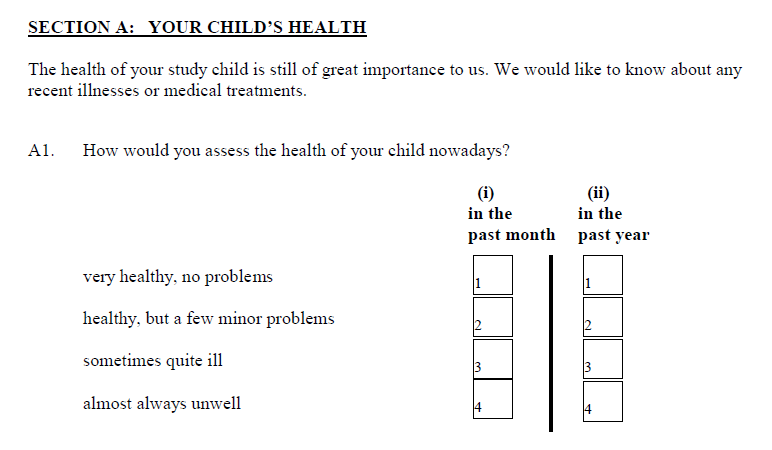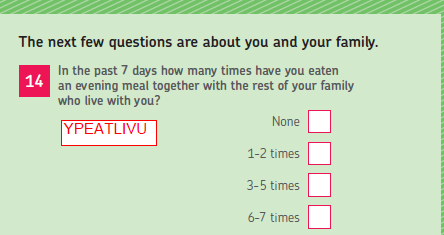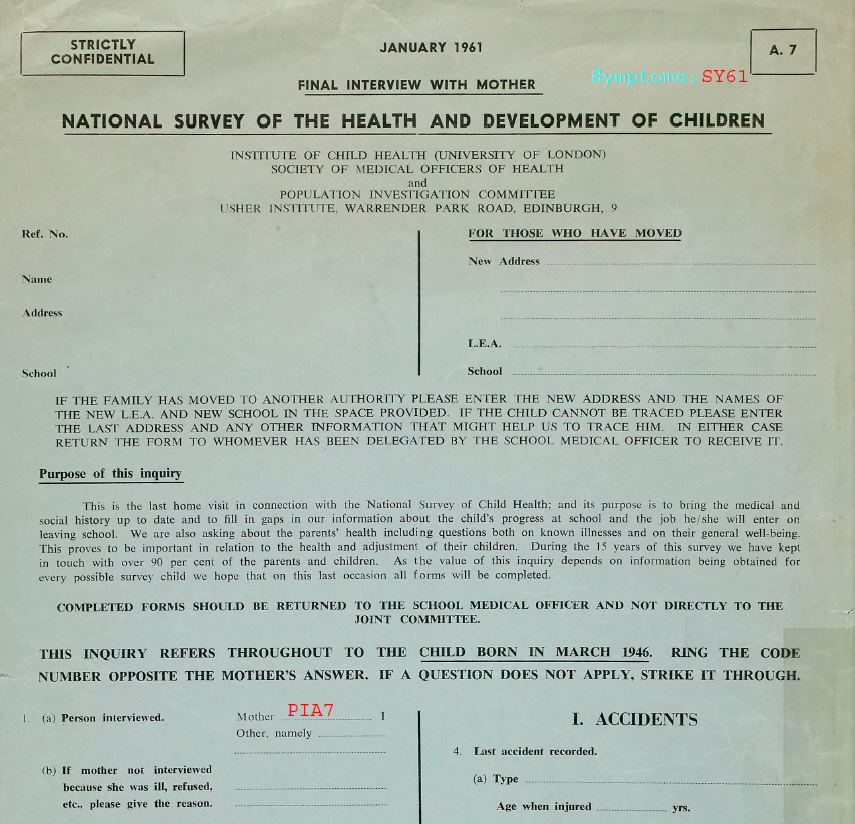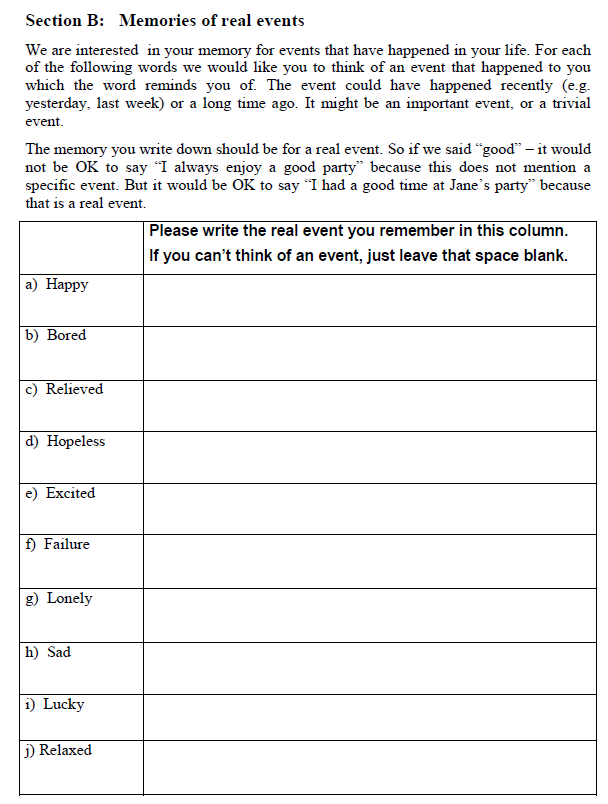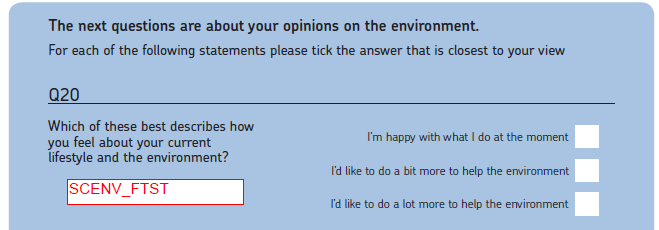Key Considerations
- More than one statement can be added.
- Statements are positional and not owned by questions.
Text within a questionnaire becomes a Statement when it does not fulfil the criteria of becoming any of the other elements (Sequence, Instruction, Condition or Question). It must not contain any context which is not already included in the question literal. Statements can be found throughout the questionnaire; at the beginning, middle and end. They can be referenced to both questions or sequences depending on their location and content.
Statements are control constructs that are independent of questions. Control constructs are concerned with positioning in a questionnaire. The statement's position is dependent upon where the text appears in the questionnaire; for example, if it appears before a question then it needs to be input before the question on Archivist, see Example 1.i
Similarly, if the statement appears after the question text then it needs to be input after the question on Archivist, see Example 1.ii
Example 1.i Questionnaire: My Son/Daughter’s Health 2000 (ALSPAC) question A14(a)
Questionnaire layout:
Archivist view (alspac_00_msdh):
Example 1.ii Questionnaire: Medical Questionnaire (NCDS) question 2(b)
Questionnaire layout:
Archivist view (ncds_74_mq):
Statement labels
Statement ID labels are a way to understand the position of a statement within a questionnaire. In order for statements to have a unique label they need to refer back to either a question or a sequence. If there is a statement connected to an entire section within a questionnaire then it needs to be labelled after the section and it always needs to be numbered; even if there is only one, see Example 2 below. For more on labelling statements please see constructing label (IDs) for more information.
Example 2 Questionnaire: My Son/Daughter’s Health and Behaviour 2000 (ALSPAC) Section A
Questionnaire layout:
Archivist view (alspac_00_msdh):
Statements may contain context
Some statements have text that is contextually important information which is then repeated within the question such as in Example 3. This example shows a simple sentence before a question explaining what the next questions are about. The important context of ‘you and your family’ is repeated in the question, so the statement does not need to be included as part of the question text.
Example 3 Questionnaire: Adult Self completion 2008 (US)
Questionnaire layout:
Archivist layout (us1_ysc):
Multiple statements
Some questionnaires have long continuous text with breaks at the beginning of a questionnaire explaining to the interviewee how to complete it, as shown in Example 4. In the Archivist view below you will see that five separate statements have been entered. This is because series of statements are entered separately where a carriage return is used in the questionnaire layout.
Example 4: Questionnaire: Final Interview with Mother 1961 (NSHD) s_intro_vi to s_intro_x
Questionnaire layout:
Archivist view (nshd_61_iwm):
Statements and question text
Some questions contain text which can be split into both statements and question text. Where the text is continuous, deciding which parts are included in the question text and which parts are included in the statement can be tricky, see Example 5 questionnaire layout. As the first paragraph contains text regarding what information the interviewer would like from the interviewee, it is input as the question text. However as the second paragraph does not provide such information and it also does not contain text which the first paragraph is contextually dependent on, it is therefore entered as a statement. Note also that as the question text cannot be separate or split from its response domain, the statement will therefore appear after the question in the Archivist view and not just after the question text as shown in the questionnaire layout.
Example 5 Questionnaire: Food and Things 2004 (ALSPAC) Section B
Questionnaire layout:
Archivist view (alspac_04_fat):
Statements and Sequences
Statements can sometimes be mistaken for a Sequence, as in Example 6. However the text ‘The next questions are about your opinions on the environment’ is entered as a statement because it does not fulfil the criteria of a sequence; of having a clear start and end.
Example 6
Questionnaire layout:
Archivist view (us1_asc):
Statements and Instructions
Finally, some questions contain more than one instruction which is not possible to input into Archivist. Therefore only one instruction is input and the remaining ones are entered as statements as shown in Example 7. The decision of choosing which text is entered as a statement and which as an instruction is usually left at the inputter's discretion. This is because the way instructions are used within questionnaires can vary greatly and therefore it is difficult to apply a consistent method. Some salient features of text input as instructions are that the text is often shorter, practically-orientated (in answering the question), and positioned closer to the response domain. See Interviewer Instructions for more on instructions.
Example 7
Questionnaire layout:
Archivist view (bcs_86_haat):
Combining Statements
Some questionnaires have groups of statements placed closely together but they are not always entered as one statement. This is mainly the case with questionnaires which begin with names and addreses. In most cases a carriage return is a strong indication to create a seperate statement (Example 8.i). Other times there is a carriage return between two statements but they are still entered as one statement because of a punctuation marker which links them together; for example, a semi-colon (Example 8.ii).
Example 8.i Questionnaire: Teacher's Questionnaire 1959 (NSHD)
Questionnaire layout:
Archivist view (nshd_59_ts):
Example 8.ii: Questionnaire Parental Questionnaire 1984 (NCDS)
Questionnaire layout:
Archivist view (ncds_74_pq):




